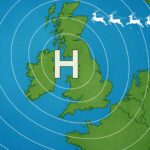
U.S. Launches New Satellite to Track Solar Storms

A U.S. satellite carrying a cutting-edge solar telescope blasted off from NASA’s Kennedy Space Center on Wednesday, aiming to give forecasters an early warning of dangerous space weather.
The Compact Coronagraph-2 (CCOR-2) aboard NOAA’s Space Weather Follow On–Lagrange 1 (SWFO-L1) satellite will monitor the Sun’s outer atmosphere for eruptions that could disrupt satellites, power grids, and communications on Earth.
The observatory will operate from the Lagrange 1 point, a million miles from Earth, providing an uninterrupted view of the Sun. Unlike previous instruments, CCOR-2 can track Coronal Mass Ejections (CMEs) in real time, capturing images every 15 minutes and detecting storms closer to the solar surface.
“These solar eruptions drive geomagnetic storms that can wreak havoc on technology,” said Dr Arnaud Thernisien of the U.S. Naval Research Laboratory, which built the instrument. “CCOR-2 will give us the data we need to predict their arrival and intensity more accurately.”
SWFO-L1 is the first NOAA satellite dedicated entirely to operational space weather monitoring and will eventually be renamed SOLAR-1. Its early-warning capabilities will help protect satellites, aviation, navigation, and power networks from disruptive solar activity.
The launch also marks a generational upgrade, replacing ageing instruments like the nearly 30-year-old LASCO coronagraph on the SOHO satellite. The CCOR design will also fly on the European Space Agency’s Vigil mission, set for 2031.
With space weather posing an increasing threat to modern infrastructure, scientists say CCOR-2 could be a game-changer in predicting and mitigating the Sun’s most destructive storms.
Share this WeathÉire story:







